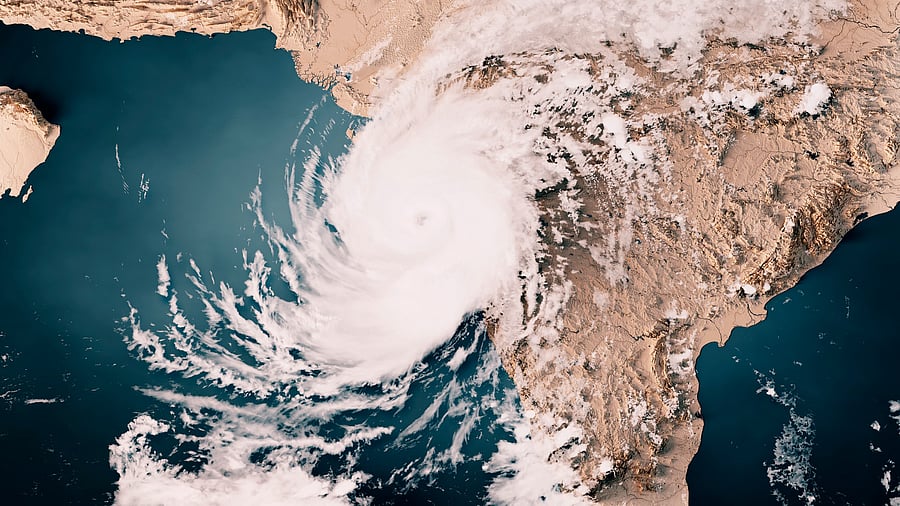
Representative image of cyclone formation.
Credit: iStock Photo
Bengaluru: Climate change has led to the intensification of the cyclones in the north Indian Ocean, thanks to increasing sea surface temperatures which are giving force to the tropical cyclones, experts said on Tuesday.
In its report, Climate Trends said the frequency and intensity of cyclones have increased manifolds, courtesy of global warming. Noting that 93 per cent of the heat is observed by the oceans with warm waters acting as energy source of cyclones, it said the intensity of the cyclone depends not only on the sea surface temperatures but also on the volume of warm water.
Roxy Mathew Kroll, climate scientist at the Indian Institute of Tropical Meteorology, said El Nino, the warm ocean system, has been getting stronger. "As oceans absorb more than 93 per cent of the additional heat from global warming, El Ninos are also getting stronger. Changes in ocean-cyclone interactions have emerged in recent decades in response to Indian Ocean warming and are to be closely monitored with improved observations since future climate projections demonstrate continued warming of the Indian Ocean at a rapid pace along with an increase in the intensity of cyclones in this basin," he said.
Climate Trends said from the year 2000, the frequency of cyclones undergoing rapid intensification has increased with the energy from warm waters allowing cyclones to turn severe with intensity greater than 65 knots. "The percentage of cyclones undergoing rapid intensification in the north Indian Ocean is higher (38 per cent) than the cyclones in the northwest Pacific Ocean (22 per cent). Due to the eastward shift of the cyclogenesis location in the Bay of Bengal, the cyclones are now travelling for a long time over the ocean and drawing more thermal energy released from the warm ocean waters," it said.
The report also cited the historical data of the cyclonic storms ravaging Andhra Pradesh. As per India Meteorological Department, a total of 184 cyclones of all categories have crossed the Andhra Pradesh coast from 1891 to 2019. "In the last 40 years, there may not have been a single year in which the state did not experience either a storm, a cyclone or heavy rains and floods," it said.